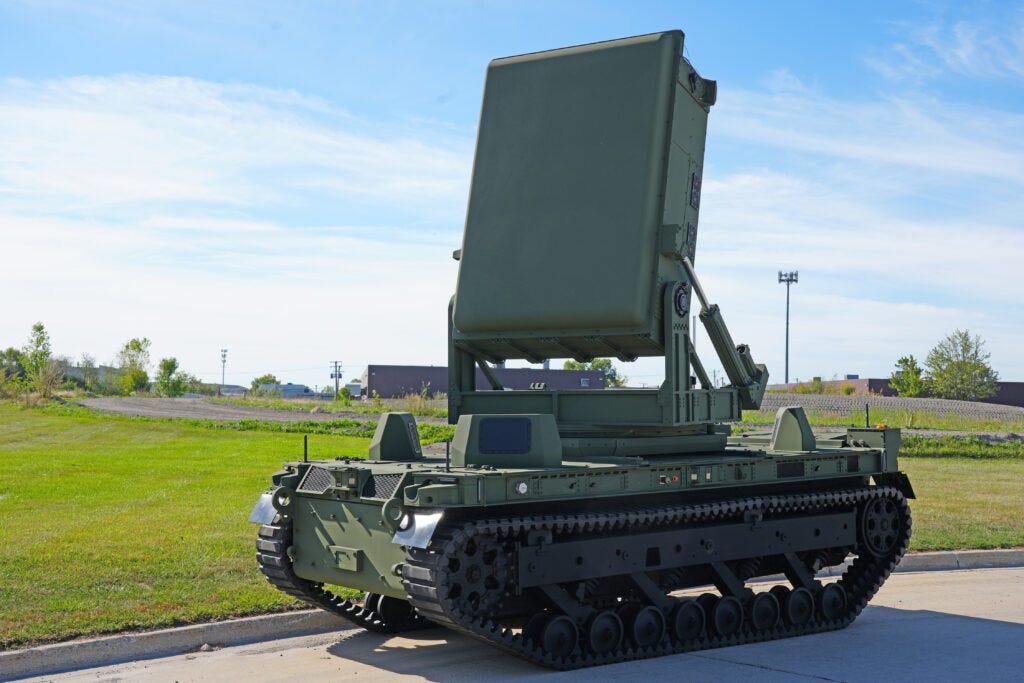US Just Mounted a Microwave Cannon on a Robot
A tracked, hybrid-electric vehicle that can travel 300+ miles on one charge.
If you read my last piece on microwave counter-UAS weapons, think of this as the sequel nobody asked for but everyone will feel.
The US just rolled out Leonidas AR, a 10-ton unmanned ground vehicle with a high-power microwave cannon bolted on top. It’s the first time someone’s tried to put a microwave gun on a robot tank that can roam and fry drone swarms autonomously.
That change is bigger than it sounds, and Ukraine has expressed interest in buying it! Well, the big Leonidas, at least.
The new kid on the block: Leonidas AR
The announcement comes from Epirus (the microwave people) and General Dynamics Land Systems (the vehicle people).
The system is Leonidas AR, a tracked, hybrid-electric vehicle that can travel 300+ miles on one charge. It’s autonomous or remote, built from the foundation of their prior work (remember Leonidas mounted on Strykers?).
But this time, no crew.
It carries the same microwave engine we’ve discussed before, bursts of directed electromagnetic energy designed to fry electronics, but now mobile, autonomous, and able to move into forward zones.
In effect, it transforms the microwave weapon from static base guard or ship defense into a roving sentinel. It can protect a convoy, guard forward bases, or roam contested areas without putting soldiers right in the line of fire.
A fixed microwave cannon is powerful, but it’s also predictable. Enemies can map its coverage, they know where it is, and worse, they can plan around it or strike it. Put that same weapon on a robot that moves, hides, repositions, and maybe even dodges countermeasures and now the defender gets to play offense with the element of “surprise mother*cker”.
Also, the battlefield is no longer “approach the wall, get zapped.” With a mobile microwave platform, swarm tactics have to fear pressure from multiple angles. You can deny terrain, force drones to fly unpredictable paths, or force them into tighter corridors where the microwave beam is strongest.
Another benefit is survivability. If the system is unmanned, you reduce risk to personnel in contested zones. You can push it closer to the action than a manned vehicle or let it hold contested terrain while people pull back.
It gives you forward electronic reach.
To work in real war, it needs lots of supporting guts.
The first is power and cooling. Microwaves aren’t kind to transistors. You need robust power systems, thermal control, and redundancy. The hybrid-electric design of Leonidas helps mitigate that, but it’s still a huge engineering load.
Then there’s autonomy and sensing. The AR vehicle has to detect drones, discriminate friend from foe, aim microwave bursts, and manage beam geometry, all while on the move.
That means sensors (radar, optical, RF), AI, and control systems that can act fast.
Keep reading with a 7-day free trial
Subscribe to Eyes Only with Wes O'Donnell to keep reading this post and get 7 days of free access to the full post archives.



